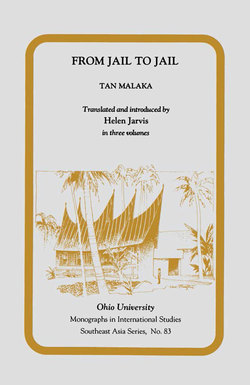Читать книгу From Jail to Jail - Tan Malaka - Страница 15
На сайте Литреса книга снята с продажи.
ОглавлениеChapter 1
THE STRUGGLE BETWEEN TWO FORCES
[7] It would not be incorrect to say that this natural world of ours is a battlefield for a never-ending struggle between negative and positive forces of essentially equal strength. Seen from another angle, these equal forces appear as repulsion and attraction.
Modern science seems to concentrate all branches of knowledge into physics and chemistry, which have the same essence: electricity. Here the continuous struggle between the two forces is very clear. But this perpetual conflict between negative and positive forces is found in all things. Even the atom, the smallest body of matter known to modern science, is the product of the struggle between these forces, in the form of electron and proton. And the same is true of the largest bodies in the universe. Planets, stars, comets, and suns are formed by negative-positive forces of attraction and repulsion acting over millions of years.
Shifting our point of view, let us take a lightning glance at the history of philosophy as it reflects the movement of social history. From Heraclitus and Democritus to Hegel and from Hegel to Marx and Engels we can observe the same struggle between two forces that we saw in the realm of nature. In philosophy this continuous and never-ending struggle is one of thesis and antithesis, giving rise to synthesis.
[8] In leaping so quickly from the field of science to that of philosophy, let us not lose sight of the basic difference between the two main schools of philosophy-idealism and materialism. Hegel’s dialectic is based on the Absolute Idea, while for Heraclitus, Democritus, and Marx and Engels the dialectic is based on matter.
For Hegel the Absolute Idea was what unceasingly drove forward the thesis and antithesis, producing the synthesis. With the right wing as the thesis, the left wing as the antithesis, the synthesis is the bird soaring high into space, never falling to earth . . . Affirmation, Negation, Negation of the Negation.1
In physics Heraclitus and Democritus never took flight from the real world.2 One of their accomplishments was the hypothesis of the existence of molecules and atoms. In their lifetime this could not be proved, as they had only the naked eye to use for observation, but some 2,500 years later, their hypothesis was verified by modern science through use of the microscope.3
The main accomplishments of the dialectic based on matter have been Marx’s discovery of the theory of surplus value in economics and Marx and Engels’ development of the theories of historical and dialectical materialism in philosophy.
It is not my intention in this small book to go into my philosophy of life, or Weltanschauung,4 which has already been dealt with in Madilog.5 The brief observation presented above was intended only to set the stage for a discussion of the struggle between negative and positive forces, between repulsion and attraction, between thesis and antithesis, in the world of law. I shall be dealing not with law in its wider sense, but with several specific cases, and not with law concerning the whole of society or even one particular group, but law as it relates specifically to myself.
In brief, I shall deal with the struggle between justice and tyranny on the battleground of my own person and life. This struggle, in its legal form, was played out by Dutch, American, and British imperialism, and finally by the Republic of Indonesia, which is supposedly based on belief in God, humanism, social justice, unity, sovereignty of the people . . . and all that.6
[9] I look at these acts wrought upon me not only with personal feelings but also with the recognition that this struggle exists throughout the universe. In my view, neither society as a whole, nor any given group within society, nor even a single individual can escape the action of these two forces—thesis and antithesis—on every aspect of life.
This small book tells my personal story of the interplay of thesis and antithesis.
